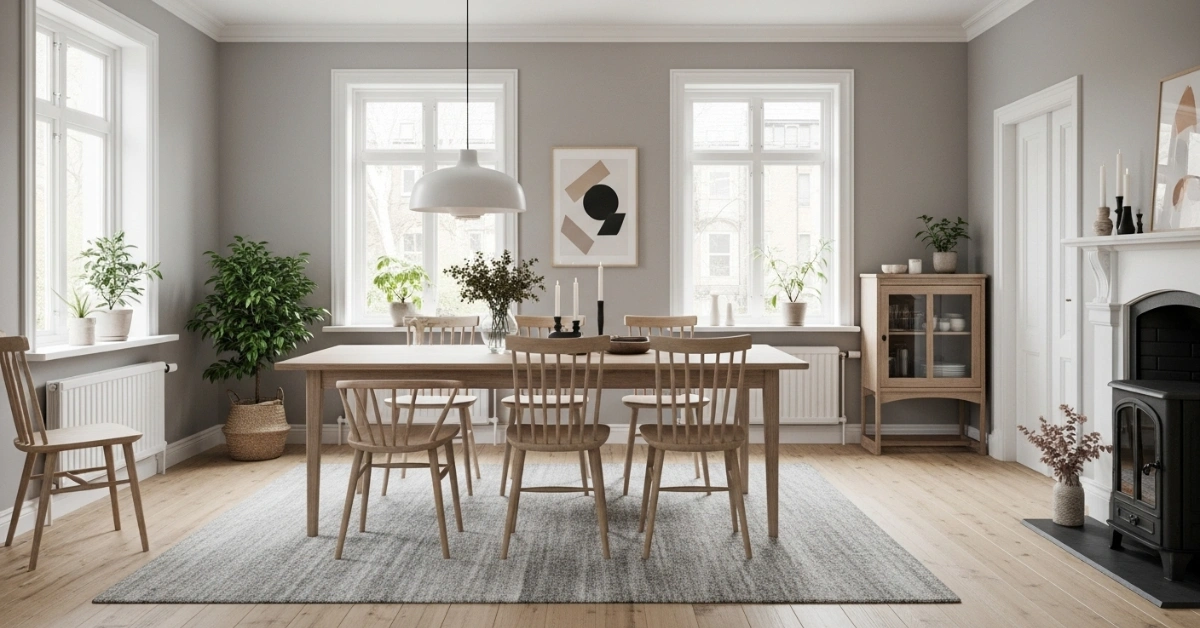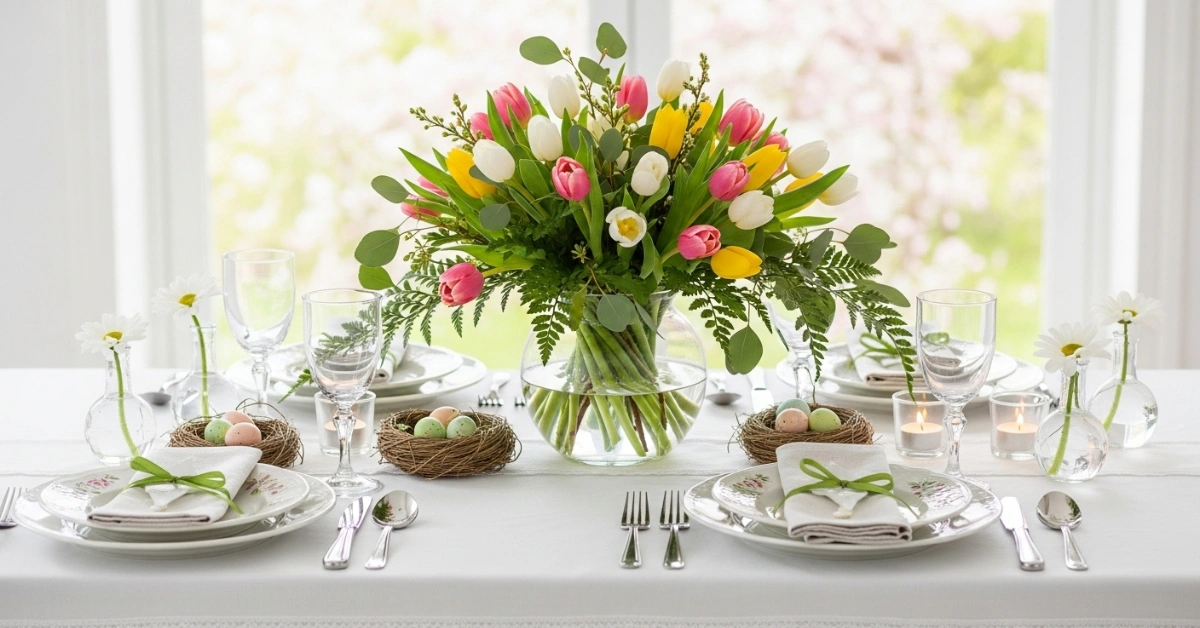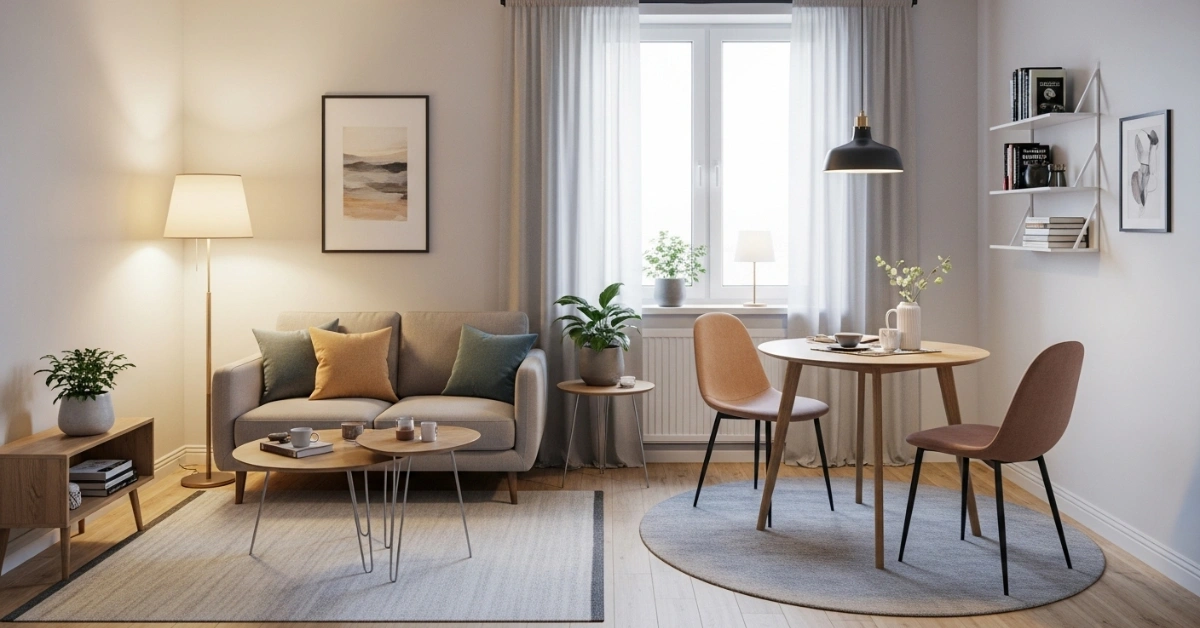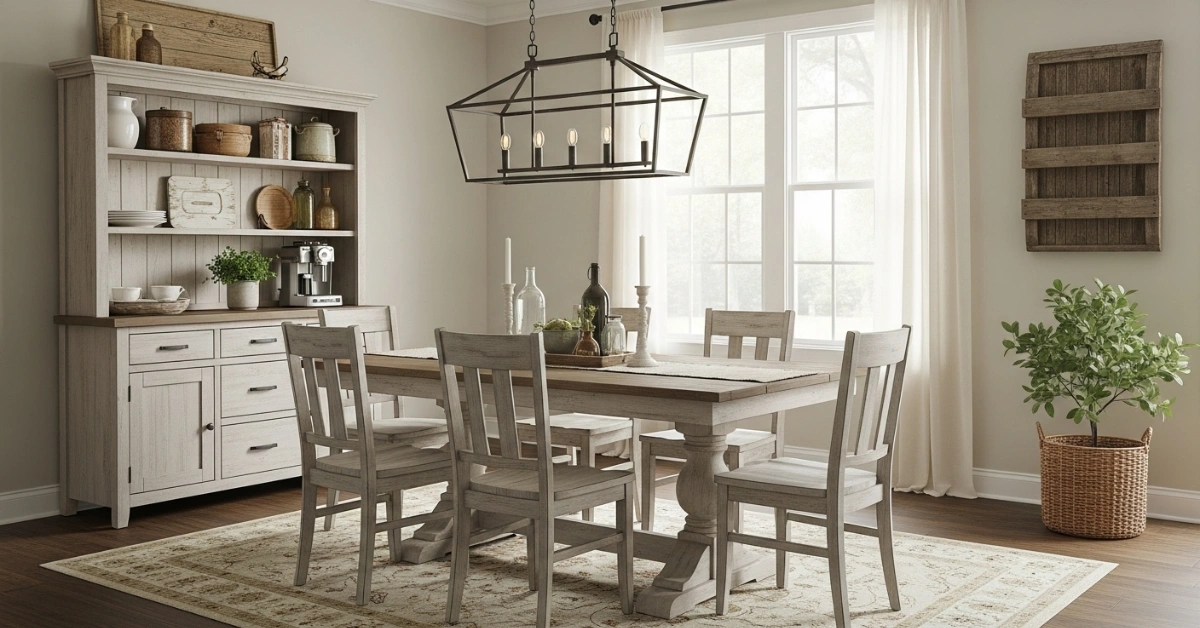16 Inspiring Japanese Dining Room Designs For A Clear Mind

In today’s fast-paced world, dining spaces often become cluttered catch-alls, filled with misplaced items and rushed meals that leave little room for connection or calm. The chaos of modern life can make it hard to find a moment of peace, turning what should be a nurturing ritual into just another task.
A Japanese dining room offers a refreshing solution, transforming your eating space into a sanctuary of balance and simplicity. Rooted in centuries-old principles of harmony, mindfulness, and respect for nature, this design style creates an inviting atmosphere for thoughtful gatherings. Whether you’re reimagining a small nook or a spacious area, these Japanese dining room ideas will help you craft a space that soothes the soul and elevates every meal.

The Essence of Japanese Dining Room Design
The charm of a Japanese dining room lies in its deep cultural roots and philosophy. Historically, Japanese dining evolved from simple floor-based meals on trays to structured spaces influenced by Chinese culture around the 7th century, introducing low tables and communal setups. By the Heian period, individual trays became common, emphasizing mindfulness and gratitude for each dish.
This history shapes the core principles of wabi-sabi, finding beauty in imperfection, and ichigo ichie, cherishing each moment as unique. These ideas translate into spaces that prioritize natural materials, minimalism, and flow, creating a sense of calm and purpose. As one interior designer notes, “A Japanese dining room is not just about aesthetics; it’s about creating a space where every meal feels like a ritual.”

In a friend’s home renovation, adopting a low table and floor cushions turned hurried dinners into intentional family moments, proving the power of these timeless principles in modern settings.
Core Elements of a Japanese Dining Room
Creating a Japanese dining room starts with selecting elements that balance form and function, fostering tranquility and practicality.
Furniture for Simplicity and Comfort
The centerpiece is often a low chabudai table, designed for floor seating with cushions or zabuton, promoting a grounded dining experience. For flexibility, choose foldable tables or benches that tuck neatly away. Sliding-door cabinets keep dishware hidden, maintaining a clean aesthetic.
“Opt for furniture that serves dual purposes,” advises designer Hana Sato. “A low table can double as a workspace, blending seamlessly into daily life.” This approach maximizes space while staying true to the minimalist ethos.

Natural Materials and Color Schemes
Earthy tones like soft beiges, warm grays, and creamy whites set a calming backdrop, with subtle accents in charcoal or forest green for depth. Materials like bamboo, cedar, and rice paper connect the space to nature, adding texture without overwhelming.
Tatami mats are ideal for flooring, but natural fiber rugs work well for budget-friendly alternatives. These choices create a cohesive, restorative environment where meals feel like a retreat.

Lighting to Set the Mood
Soft, diffused lighting is key, think paper lanterns or recessed lights that mimic natural glow. Shoji screens over windows filter sunlight, casting gentle patterns that enhance ambiance. For evenings, add candles or LED strips for warmth.
Avoid harsh fluorescents; instead, use dimmable floor lamps to adjust the mood. This layered approach makes every meal feel intimate and serene.

Minimalist Decor for Focus
Decor should be sparse yet meaningful. A single ceramic vase with seasonal branches or a understated wall scroll adds character without clutter. Tableware, like handcrafted bowls in neutral tones, encourages mindful eating.

Here’s a quick breakdown of essential elements:
| Element | Purpose |
|---|---|
| Low Chabudai Table | Encourages relaxed, grounded dining |
| Neutral Palette | Soothes and reduces visual noise |
| Bamboo/Wood | Connects space to natural world |
| Paper Lanterns | Creates soft, inviting light |
| Simple Decor | Keeps focus on the meal |
These elements lay the foundation for a Japanese dining room that feels both authentic and functional.
Modern Interpretations of Japanese Dining Rooms
Blending tradition with contemporary flair, modern Japanese dining rooms adapt to today’s lifestyles while preserving their serene core.
Japandi: A Fusion of Styles
Japandi, a blend of Japanese minimalism and Scandinavian coziness, is perfect for modern homes. Think sleek wood floors paired with plush linen table runners or cushions in muted tones. This style adds warmth and durability, ideal for families.
In one urban apartment, a Japandi-inspired dining nook with a low oak table and wool cushions created a cozy yet open feel, proving versatility in small spaces.

Space-Saving Solutions for Small Homes
For compact areas, wall-mounted shelves or foldable furniture maximize space. A corner dining setup with a slim table and hanging plants can feel expansive despite limited square footage. Sliding glass doors to a balcony blur indoor-outdoor boundaries, enhancing openness.

Subtle Modern Accents
Introduce a single bold element, like a muted teal accent wall or a sleek glass-top table with bamboo legs, to bridge old and new. “Restraint is key,” says designer Kenji Mori. “Let one modern touch shine against a minimalist backdrop.” This keeps the space fresh and timeless.

Tech-Enhanced Comfort
Incorporate subtle tech, like under-table heating (inspired by kotatsu) or smart lighting with dimmers, to enhance comfort without disrupting aesthetics. These updates make the Japanese dining room practical for daily use.

Practical Tips to Design Your Japanese Dining Room
Transforming your space doesn’t require a complete overhaul. Start small and build thoughtfully.
- Declutter First: Clear out unnecessary items to embrace open space, which fosters calm.
- Measure Carefully: Ensure furniture fits your room’s dimensions to avoid crowding.
- Choose Sustainable Materials: Opt for bamboo or reclaimed wood for eco-conscious style.
- Layer Textures: Combine smooth ceramics with woven mats for visual interest.
For lighting, install dimmers to mimic natural light shifts, enhancing mood. Add low-maintenance plants like bonsai or ferns to bring life and improve air quality.
On a budget? Thrift vintage trays or DIY shoji screens from affordable frames. One homeowner shared, “Swapping to ceramic tableware was an easy first step that set the tone for the whole room.”

Keep surfaces dust-free for a pristine look, and use essential oil diffusers with cedar or hinoki scents for an authentic touch. In multi-purpose rooms, define the dining area with a tatami-style rug for seamless zoning.
Avoiding Common Design Pitfalls
Steering clear of mistakes ensures your Japanese dining room stays true to its essence.
- Overcrowding: Too many items disrupt harmony; select only purposeful pieces.
- Bold Colors: Bright hues can overwhelm; stick to earthy tones for calm.
- Wrong Scale: Oversized furniture clashes with low tables, breaking flow.
- Cheap Imitations: Low-quality tatami or shoji mimics feel inauthentic, invest wisely.
- Ignoring Function: Aesthetic spaces must still be practical, with easy-clean surfaces.
“Don’t over-polish,” warns designer Aiko Tanaka. “Wabi-sabi embraces natural flaws, so let imperfections add character.”
Japanese Dining Etiquette to Enhance the Experience
Cultural customs elevate the Japanese dining room’s purpose. Remove shoes before entering tatami spaces to show respect. Begin meals with “itadakimasu,” a phrase of gratitude for the food.
Hold bowls close to avoid spills, and never point chopsticks or stick them upright in rice, it’s considered rude. Slurping noodles is acceptable, signaling enjoyment. When serving drinks, pour for others first to foster community.

At home, simplify with placemats that echo traditional trays, making setup easy while honoring the ritualistic feel.
Real-Life Inspirations for Your Japanese Dining Room
Real projects show how these ideas come to life. In a Seattle home, a Japanese dining room with a kotatsu table and floor cushions created a warm winter gathering spot. Shoji dividers in a Chicago loft turned an open-plan space into a tranquil dining nook, proving small tweaks make a big difference.

Designer Yumi Nakamura shares, “Japanese dining rooms are about creating space for connection, not just eating.” Another expert, Taro Ikeda, adds, “Use natural elements to ground the space, it’s sustainable and timeless.”
These examples highlight how a Japanese dining room adapts to diverse homes, offering endless inspiration.
Conclusion:
A Japanese dining room is more than a design choice, it’s a way to infuse your home with tranquility and intention. By blending minimalist aesthetics, natural materials, and mindful practices, you create a space that nurtures both body and soul.
Ready to transform your dining experience? Start with one idea, a low table, a neutral palette, or a single plant and watch your Japanese dining room come to life. Begin your journey to serene meals today!






